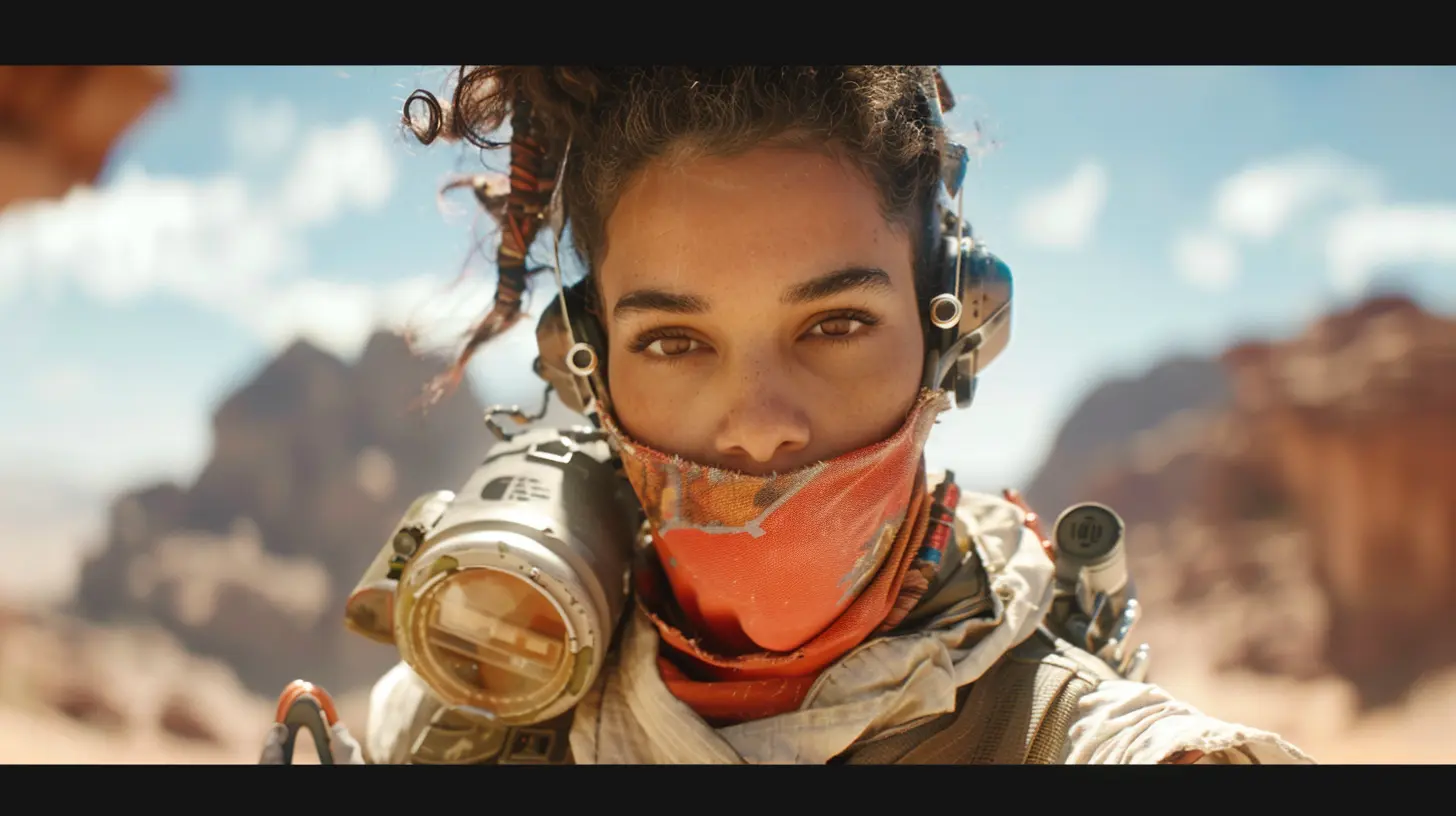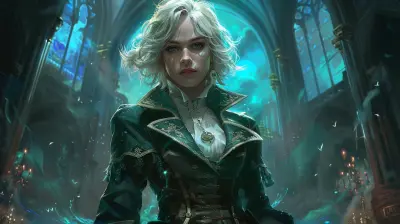Breaking Gender Norms: Nontraditional Voice Casting in Games
18 November 2025
Picture this: you're playing your favorite video game, fully immersed in its rich world, when a character's voice stops you in your tracks—not because it was bad or out of place, but because it was... different. It defied stereotypes. It broke expectations. That, my friend, is the magic of nontraditional voice casting in games.
Gone are the days when male characters had to sound like gruff action heroes or every female character needed to speak in a soft, sweet tone. Video games today are rewriting the rules, challenging gender norms, and proving that when it comes to storytelling, voices have no boundaries. Let’s dive into the fascinating world of nontraditional voice casting and see how it’s redefining gaming as we know it.
Gender in Gaming: A Quick History Lesson
Not too long ago, the industry had a pretty cookie-cutter approach. Male characters were warriors, soldiers, or knights. You know the drill—they had that deep, commanding "I’m here to save the world" voice. Women, on the other hand, were either damsels in distress or love interests, often portrayed with light, airy voices that whispered, "I’m delicate. Please rescue me."It wasn’t just frustrating—it was limiting. Developers unknowingly boxed themselves into gender roles that didn’t reflect the diversity of their players. You’d never hear a female warrior with a booming, commanding voice or a sensitive, emotional male character without people raising an eyebrow. But times have changed, and thank goodness for that.
Why Nontraditional Voice Casting Matters
Here’s the thing: representation in games isn’t just about what characters look like. It’s about who they are, how they act, and yes—how they sound. Voices breathe life into characters. They connect us emotionally to the game world. When voice actors step outside gender norms, it sparks something special: authenticity, relatability, and a whole lot of freshness.Think about it. Life doesn’t fit into neat little boxes, so why should character voices? Nontraditional voice casting mirrors real-life experiences, drawing us deeper into game narratives. It challenges outdated stereotypes and creates space for everyone to feel seen, heard, and—most importantly—represented.
Examples of Breaking Gender Norms in Voice Casting
Feeling a little skeptical? Don’t worry—I’ve got receipts! Let’s look at some standout examples where games have gone against the grain in voice casting.1. Commander Shepard (Mass Effect Series)
Anyone who’s played the Mass Effect series knows you can choose between a male or female Commander Shepard. But what makes "FemShep" (voiced by Jennifer Hale) so special is how she delivers strength and authority without falling into stereotypical "feminine" tones. She’s commanding, assertive, and oh-so-badass, proving that a strong leader isn’t defined by gender.2. The Narrator (The Stanley Parable)
Here’s a wild one. The Stanley Parable toyed with voice casting by intentionally making the narrator androgynous in tone. While not a traditional "character," players were left questioning the voice’s gender, which added to the surreal, boundary-pushing charm of the game.3. Kreia (Star Wars: Knights of the Old Republic II)
Kreia, the mysterious mentor figure in KOTOR II, is voiced by Sara Kestelman. Her voice carries an edge—wise, sarcastic, and morally ambiguous. She challenges the archetype of the "gentle, nurturing female mentor" by delivering lines with power and authority that equally inspire and intimidate.4. Ellie (The Last of Us Series)
Ashley Johnson's performance as Ellie is a masterpiece of subverting expectations. While Ellie identifies as female, her voice adds layers of grit, sarcasm, and emotional vulnerability. She’s not confined by traditional "young girl" tropes, and her voice beautifully reflects her complexity.
How Developers and Players Benefit
So, why are developers leaning into nontraditional voice casting? Simple. It’s good for everyone.1. Richer Storytelling
When you expand the pool of talent, you unlock stories that resonate on a deeper level. Nontraditional casting allows characters to defy expectations, surprising players in ways that stick with them long after the credits roll.2. Player Engagement
Let’s face it—gamers are tired of clichés. A quirky male villain with a high-pitched voice or a female protagonist with a gravelly, battle-hardened tone grabs attention. It’s like tasting your favorite dish with an unexpected spice; it keeps things fresh.3. Inclusivity Wins Hearts
Representation in voice casting breaks down barriers. Gamers from all walks of life want to see themselves reflected in the media they consume. Nontraditional casting shows the world that gaming is for everyone.4. Bigger Talent Pool
Limiting casting to "traditional" voices means you’re excluding a mountain of potential talent. By stepping away from gender norms, developers can tap into a wider range of voices, giving their games an edge.Challenges of Breaking the Mold
Of course, breaking gender norms in voice casting isn’t all sunshine and rainbows. If it were easy, everyone would be doing it. There’s still pushback from certain corners of the gaming world—those who cling to outdated stereotypes like they’re life preservers.Plus, casting outside the norm requires some extra thought. You can’t just throw a voice onto a character without considering the context. Developers need to ensure the decision feels intentional and resonates with the game’s tone, story, and themes. Otherwise, it risks coming off as gimmicky.
What's Next for Nontraditional Voice Casting?
Honestly, the sky’s the limit. As the gaming industry continues to evolve, so will the ways we tell stories and the voices that bring them to life. Here are some trends we might see in the near future:1. AI-Assisted Casting
Okay, hear me out. AI tools can help developers explore a wider range of voices and even create unique ones. But don’t worry—this isn’t about replacing voice actors. It’s about enhancing creativity and enabling experimentation.2. More Queer Representation
We’re already seeing LGBTQ+ characters become more prominent in gaming, and their voices reflect that diversity. Expect even more nonbinary, trans, and genderqueer actors to shine in ways that push boundaries.3. Interactive Voice Choices
Imagine choosing a character’s voice as part of character customization! It’s the next logical step in creating immersive, player-driven experiences.4. Indie Games Leading the Charge
Big studios often play it safe, but indie developers? They’re fearless. Expect indies to continue paving the way for nontraditional voice casting, experimenting with bold ideas that bigger companies eventually adopt.Final Thoughts
It’s an exciting time to be a gamer. Nontraditional voice casting is shaking up the industry, reminding us that games can be so much more than we ever imagined. They can be tools for empathy, vehicles for representation, and mirrors of the real (and wonderfully messy) world we live in.So next time you play a game and hear a voice that challenges what you expected, take a moment to appreciate it. That's progress in action—a small but mighty step toward inclusivity and creativity in gaming.
all images in this post were generated using AI tools
Category:
Voice Acting In GamesAuthor:

Tayla Warner
Discussion
rate this article
1 comments
Gavin Heath
Great insights! Nontraditional voice casting enriches character diversity and challenges outdated gender stereotypes in gaming.
November 18, 2025 at 3:50 AM


